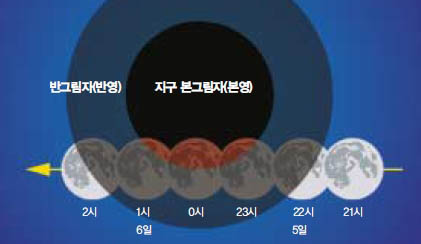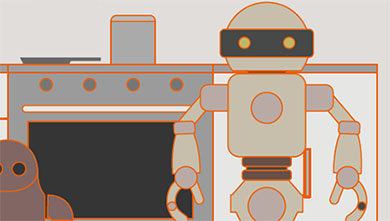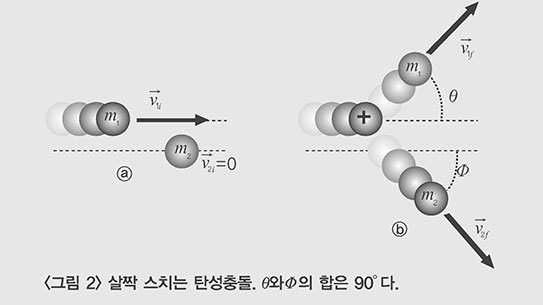
소련의 아르메니아에서 수만명의 생명을 앗아간 최근의 지진과 그 후에 소련의 타지키스탄에서 일어난 지진으로 인하여 우리는 진동하는 지구에 대하여 다시 생각해 보게 된다.
지구는 진동하고 있으며 이것은 막을 도리가 없다. 지구는 지질학적으로 살아있다. 지각은 여섯개의 커다란 판(대륙)과 몇개의 보다 작은 육지들로 이루어져 있는데 이것들은(매우 느리긴 하지만) 계속 서로서로에 대항하여 움직이면서 커다란 왜력(歪力)을 만들어 내고 있다. 결국 이 왜력이 마찰력보다 커지면 판(대륙)이 조금씩 미끄러지면서 지진이라는 끔찍한 진동을 일으키게 된다. 이러한 지진은 때로는 가공할만한 것이다.
그러나 지진자체로 인하여 사람이 죽게 되는 것은 아니다. 건물들로 인하여 사람이 죽게 된다. 만약 어떤 사람이 지진이 일어날 당시 공터에 있었다면 아무리 끔찍한 지진이라 할지라도 5분정도에 끝나게 될 것이고 그 사람은 안전할 것이다. 그러나 같은 시간에 건물내에 있었다면 그 지진으로 인하여 건물이 무너져내려 그 안에 있는 사람을 죽이게 될지도 모른다. 우리가 알고 있는 최악의 지진은 1556년 중국의 한 도시에서 일어난 것으로 83만명의 생명을 앗아간 것으로 추정된다. 이 추정이 얼마나 정확한지는 알 수가 없다. 그러나 1976년 중국의 한 도시에서 일어난 지진은 24만2천명의 생명을 앗아갔다.
어떻게 하면 이러한 희생을 예방할 수 있을까?
1) 대부분의 주요 지진이 일어난 곳으로 알려진 판 결합부위에 너무 가까이 도시를 건설하지 말아야 한다. 그러나 이것은 소용 없는 주장이다. 도시는 기후가 좋고 통신이 용이한 곳, 예를들면 해안선 강가 계곡 등에 세워지게 되는데 지구의 주요도시의 약 5분의 2가 판 결합부위에 세워져 있으며 이 도시들을 이전시킬 방법이 없는 것이다.
더구나 상황은 점차 악화되고 있다. 왜냐하면 도시들이 보다 더 커지고 있으며 최소한 얼마동안은 계속 확대될 것으로 보이기 때문이다. 현재 세계에서 가장 큰 도시는 멕시코시로서, 약 1천5백만명의 인구가 커다란 지진이 발생할 수 있는 지점에 살고 있으며, 1985년에는 이곳에 근접해 있지도 않은 곳에서 일어난 지진으로 인하여 5천명이 희생되었다. 2000년 경에는 멕시코시에 지진으로 인한 피해 위험에 처하게 될 인구 수는 2천5백만명에 달할 것으로 추정된다
이러한 상황은 다른 1백여개의 도시에서도 마찬가지인데, 2000년 경에는 약 2억9천만에 해당하는 인구가 지진으로 위험에 처할 것으로 보인다. 어떠한 일이 일어날지를 생각하면 끔찍하다.
2) 지진발생위험지역에 도시를 건설할 수 밖에 없다면, 대신 지진으로 인한 피해에 견딜 수 있는 도시를 건설할 수는 없겠는가? 소련의 아르메니아에서 일어난 재난의 부분적인 원인은 건물들이 허술했기 때문이다. 그러나 허술한 건물이라는 말은 비용이 적게 드는 건물을 의미하며 지진에 견딜 수 있는 건물이란 비용이 많이 드는 것을 의미하는 것이다. 경제적 여유를 거의 가지고 있지 않으며, 오랫동안 일어날지 안 일어날지 모르는 지진보다 더 급박한 문제들을 많이 가지고 있는 경제상황하에서는 값이 비싼 건물을 짓기 위하여 투자하기는 어려운 일이다.
2000년 경 지진으로 인한 피해 위험에 처하게 될 2억9천만명의 인구중 약 80%가 국민들을 안전한 건축물속에 보호할 수 있을 만한 재정을 지니지 못한 개발도상국에 살게 될 것이다. 미국조차도 오늘날과 같은 적자가 계속되거나 악화된다면, 건물의 퇴락을 방지하지 못할 것으로 보인다.
3) 지진을 예보하여 지진의 피해를 줄일 수도 있을 것이다. 그러나 지진이 내년에 어떤 도시근처에서 발생할 것이라고 예보할 수 있다고 하더라도 그 예보가 그 도시를 강하고 안전하게 만들 시간적 여유를 주지는 못한다. 우리가 할 수 있는 일이란 기껏해야 그 도시를 비우는 것이다. 도시가 무너져내릴 때까지 수백만명의 사람들을 도시밖으로 이주시키고 그들을 밖에 둔다고 하는 것은 불가능한 일이며 설사 실현이 된다 하더라도 그로인한 혼란은 실제의 지진만큼이나 큰 외형적 피해를 안겨줄 것이다.
그렇다면 우리가 해야할 필요가 있는 것은 어떻게 하면 장기적으로 지진을 예보할 수 있는가를 아는 일이다. 훌륭한 정밀도로 어떤 도시가 55년 후에(1년이 빠르거나 늦더라도) 커다란 지진을 맞이하게 될 것임을 예보할 수 있다고 상상해 보라. 이러한 예보는, 아마도 전세계의 도움을 받아서, 이 도시의 기존의 건물들을 허물고 다시 지어서 튼튼하게 할 시간적 여유를 제공하고 점진적으로 모든 도시들이 보다 안전해지고, 지진으로 인한 피해정도는, 비록 완전히 없어지지는 않는다 하더라도, 최소한으로 줄어들게 될 것이다.
어떻게 장기적인 지진예보를 가능하게 할 수 있을까? 간섭계(빛의 파장을 측정하는 기계)와 레이저를 이용하여 지진을 유발하는 지질학적 판의 미소한 이동을 측정할 수 있는 기술이 이미 개발되었다. 이러한 측정을 바탕으로 하여 과학자들은 형성되고 있는 왜력의 크기를 추정할 수 있다. 하지만 지구상의 모든 곳에서 이러한 측정을 하기는 어렵다.
그러나 인공위성에서 지구형태의 미소한 변화와 지구표면의 미소한 운동을 측정하는 것은 충분히가능하다.- 이것은 "구상측지학"의 한 종류로서 우주공간으로 부터의 관측을 통하여 가능하게 되었다. 우리는 모든 장소에서 모든 판들의 운동과 왜력의 일반적인 형상을 알수 있을 것이다. 컴퓨터를 이용하여 분석하면 언제 어떤 지점에서 왜력이 형성될는지를 예견할 수 있고 그렇게 되면 앞으로의 지진 발생시간과 발생장소 모두를 알 수 있게 되어 커다란 위험을 피할 수 있는 최선의 대응책을 마련할 수 있게 될 것이다.
우주계획은 지상에서 보다 유용하게 쓰여질 수 있는 자금을 낭비하는 것이라고 생각하는 사람들에게는 "위에서 내가 말한 것보다 더 지상적(地上的)인 것은 무엇인가"라고 반문해 볼 수 있다.
The recent earthquake in Soviet Armenia, in which some tens of thousands died, and the earthquake that came later in Soviet Tadzhikistan, forces us to think about our trembling Earth again.
The Earth does tremble and this can't be helped. It is geologically alive. Its crust is made up of half a dozen large plates and a number of smaller ones. These are constantly (if very slowly) moving against each other and building up terrific strains. Finally, the Strain overcomes the enormous friction and a plate slips slightly and that is enough to set up fearsome vibrations that represent an earthquake, sometimes a monstrous one.
It is not, however, the earthquake itself that kills people ; buildings do. If someone is caught in the open in an earthquake, the shaking of the Earth may be frightening indeed, but it will be over in five minutes or so and you will be safe. If, however, you are within a building at the time, the building may collapse and could kill you. The worst earthquake we know of killed an estimated 830,000 people in a city in China in 1556. We cannot know how accurate that estimate may be, but 242,000 were killed in an earthquake in a city in China in 1976.
How can we prevent this?
1) We might argue that we should not build cities too close to known plate junctions where most of the major earthquakes are known to occur. That is a lost cause, however. Cities are built where climate and communications are easy-on coast-lines, on rivers, in valleysand it so happens that some two-fifths of the major cities on Earth happen to be built near the plate junctions. There's no way of shifting them.
Furthermore, the situation grows steadily worse, for the cities grow larger, and will continue to do so for at least a while. The largest city in the world now is Mexico City, which has at least 15 million people within reach of a major earthquake and which lost 5,000 people to one that was not very close by in 1985. By the year 2000, the number of people at risk in Mexico City will be perhaps 25 million.
This can be repeated for any of a hundred cities, with a total population of perhaps 290 million at risk in the year 2000. The mind boggles at what might happen.
2) If we can't help having cities in dangerous areas, can we construct them so as to be earthquake-resistant? The havoc in Soviet Armenia came about in part because of the shoddy construction of the buildings. But when we say shoddy construction we mean cheap construction and when we talk about earthquake resistance, we mean expensive construction. The fact is that it is difficult to invest in expensive construction in an economy that has little surplus wealth, and with many problems more immediate than an earthquake that may or may not come for long time.
Some 80 percent of the 290 million people at risk in the year 2000 will live in developing nations that are simply not going to have the means to keep all their millions in safe structures. Even the United States may not be able to keep pace with structural deterioration, if our deficit problems continue and grow worse.
3) Perhaps we can predict earthquakes and help matters in that way. But if we learn to tell that an earthquake is going to take place near a certain city next year, that does not give us time to reinforce the city and make it safe. All we can do is evacuate the city. Getting millions of people out of a city and keeping them out until the city falls down is an impossible task, and, even if it could be done, the resulting dislocation may be as traumatic as the actual earthquake.
What we need to do, then, is to learn how to make long-range predictions of earthquakes. Suppose we could tell, with good accuracy, that a certain city will be suffer a major earthquake in 55 years, give or take a year of so. That would give time to strengthen structures, to demolish and rebuild, with perhaps the entire world contributing. Little by little all cities would become safer and the potential for earthquake damage, while probably never eliminated altogether, will be minimized.
How do we make long-range predictions? Techniques have already been developed to measure the tiny motions of the geologic plates that cause earthquakes, making use of fancy interferometers (instruments that measure wavelengths of light) and lasers. Using these measurements, scientists can measure the strains that build up, but it is difficult to make use of these devices everywhere on Earth.
It may well be possible, however, to measure the slight changes in the shape of the Earth and the slight movements of its surface from satellites-a kind of "global geodesy" made possible by the view from space. We could get a general picture of the motions of all the plates, the building up of strains everywhere. A computerized analysis may tell us just when the strains will give at certain points and then we can build a real picture of future earthquake distribution in both time and space, and take the best action to avoid major damage.
To those who think that space projects are a waste of money that could be spent more usefully on "down-to-Earth" problems, we can ask : What can be more down-to-Earth than what I have just described?
(c) 1989, Los Angeles Times Syndicate

















